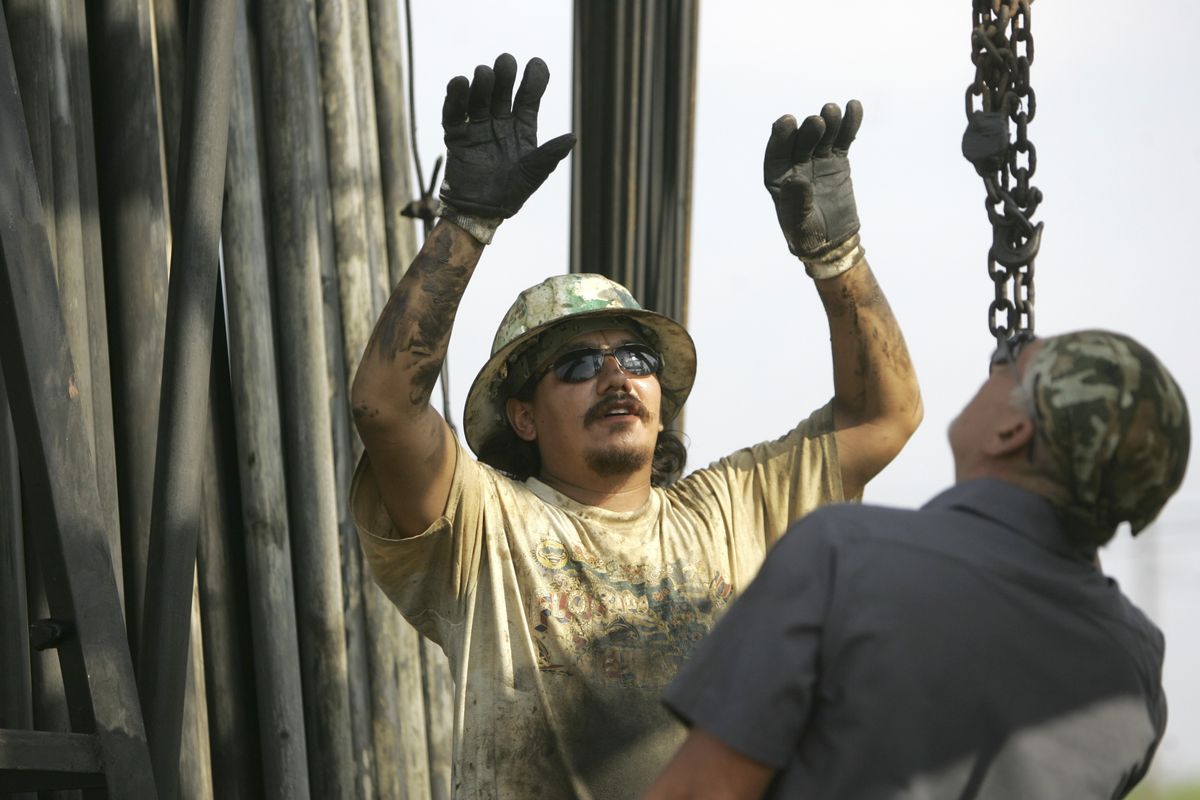Oil workers face rising death toll
Experts cite several factors behind sharp increase

SNYDER, Texas – Less than two months into the job in the oil fields of West Texas, Brandon Garrett was sliced in half by a motorized spool of steel cable as he and other roughnecks struggled to get a drilling rig up and running.
Garrett’s grisly end illustrates yet another soaring cost of America’s unquenchable thirst for energy: Deaths among those working the nation’s oil and gas fields have risen at an alarming rate, the Associated Press has found.
At least 598 workers died on the job from 2002 to 2007, according to the U.S. Bureau of Labor Statistics. During that period, the number of deaths per year rose by about 70 percent, from 72 victims in 2002 to 125 in 2006 and a preliminary count of 120 in 2007.
The number of people laboring in the nation’s oil and gas fields has been soaring as part of a drilling boom that began in 2000-01, but that alone does not appear to explain the rising death toll, since the fatality rate – the number killed relative to the number of workers – also climbed during the first half of the decade.
Many of those deaths have happened in Texas, the nation’s largest producer of crude oil and natural gas.
Experts blame several factors for pushing the toll ever higher in an industry long considered one of the most dangerous in the nation. Among them:
•A dramatic increase in drilling, spurred by record-breaking oil and natural gas prices. The number of workers in oil and gas jobs shot up from 290,000 in 2002 to 428,000 in 2007. In July 2002, 740 land-based oil and gas rigs were operating in the United States; today, there are about 2,000.
•An influx of new workers hired to operate all those rigs. Many of the newcomers are young, inexperienced and speak little English.
•A high-pressure environment where workplace safety lapses are common. Government agencies responsible for enforcing the rules rarely dole out tough penalties.
•Rampant drug and alcohol use among workers, some of whom turn to methamphetamine to get through 12-hour shifts and labor up to 14 days in a row.
Workers at drilling sites are surrounded by heavy machinery that can kill or maim in an instant. About half the workers who die are struck by equipment or are killed in motor vehicle accidents. Others fall from catwalks, are crushed by falling loads, burned in explosions or become tangled in chains and cables.
“This is a very, very hazardous industry with a very high rate of injuries and fatalities,” said Peg Seminario, director of safety and health for the AFL-CIO. “Safety and health problems are not getting the attention they need. With the growing demand for oil and petroleum products, the production pressures are going to increase and the safety and health problems are going to get worse.”
Many experienced oil field workers left the industry in the mid-1980s during the oil bust, when a barrel sold for less than $10. Now, with prices over $100 a barrel, many drilling companies are hiring workers with little or no experience.
“A lot of the rig crews are made up of people who were working at Wal-Mart yesterday. Literally,” said Mark Altom of the Woodard, Okla.-based Energy Training Council, a nonprofit organization whose programs are recognized by the Occupational Safety and Health Administration.
Kenny Jordan, executive director of the Association of Energy Service Companies, made up of 750 member companies that service oil wells, said that while even one death is too many, oilfield workers are on the job far more hours than before, and that translates into increased chances of injury or death.
He said companies are spending more money to train workers to do their jobs more safely, adding, “I think most people in our industry are cognizant and they have the best interest of their employees in mind.”
Garrett’s mother, Darlene Murrell, said she believes her son would still be alive had he received more thorough training and better supervision after Patterson-UTI Energy hired him as a rig crew floor hand, a job that might have paid $50,000 a year with overtime.
“I hate to think that someone else is going to have to go through the same thing that I went through,” she said.
Garrett, 23, came to the West Texas oil fields with hopes of landing a good-paying job to help provide for his 4-year-old daughter.
On Easter Sunday 2007, the day he died, he was helping four other crew members repair a plugged drill bit on a rig about 70 miles northeast of Lubbock in the Texas Panhandle. A supervisor split the men into two groups performing different procedures to get the rig back in operation more quickly, according to OSHA reports.
Garrett was standing on top of a spool when another crew member accidentally activated it. Garrett was pulled into the machine. The cable cut his torso in half.